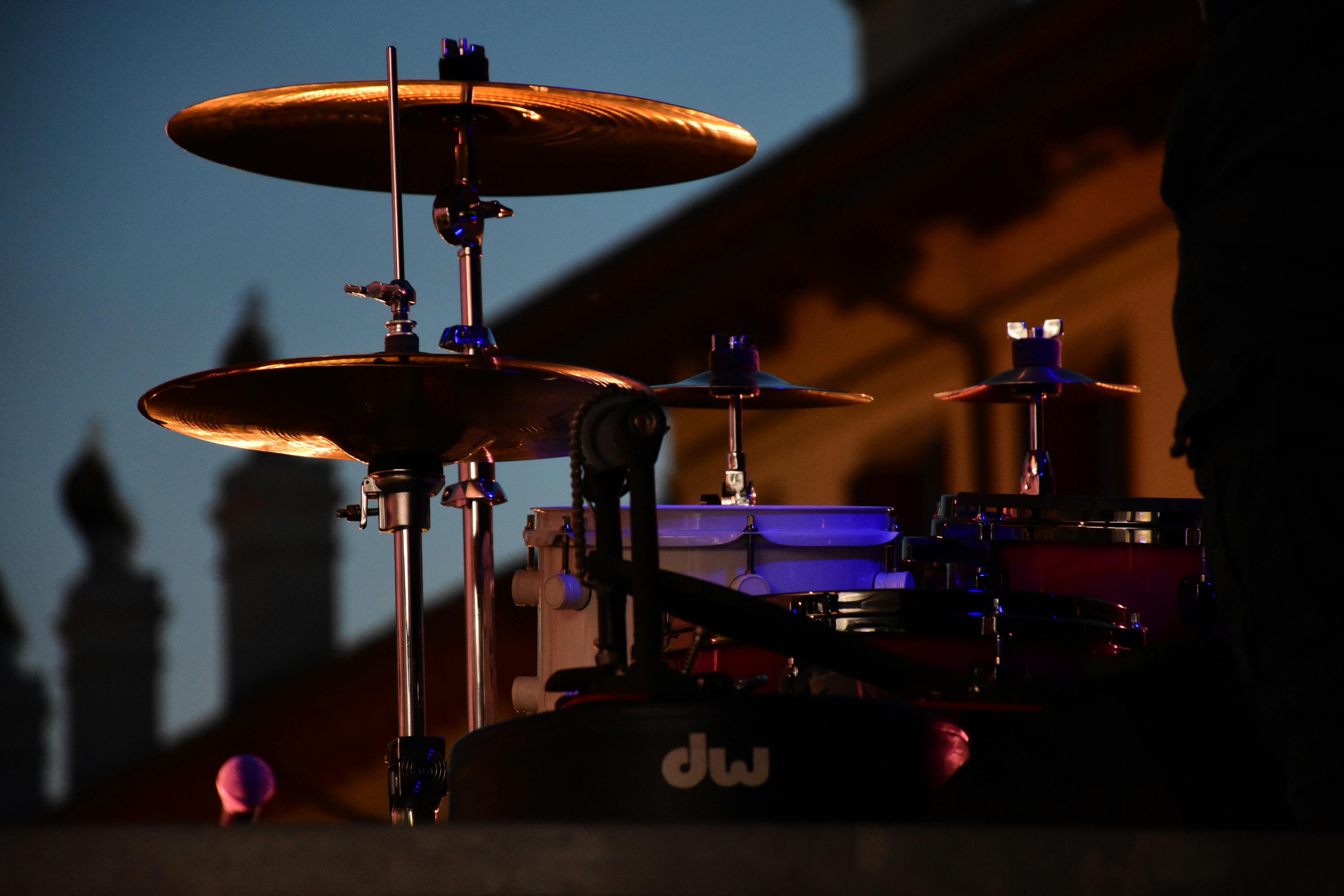Search Topic
The overview of the steps to create an EDM composition

Electronic dance music (EDM) has taken the music industry by storm in recent years, and many aspiring musicians want to create their own compositions. But the process can seem overwhelming to those who are just starting out. The good news is that with today’s technology, it has become easier than ever to create your own EDM tracks.
In this blog post, we will give you an overview of the steps involved in creating an EDM composition. From selecting the right software to creating beats and mixing tracks, we’ll cover everything you need to know to get started. So buckle up and get ready to learn from the experts at Plugintutor Blog!
Step 1: To record your music sounds over a drum kit, set the BPM of your DAW to 128.
What is EDM?EDM is short for Electronic Dance Music, and it encompasses many genres of electronic music. It can be thought of as a broad umbrella term that describes the type of music made by DJs and producers who use electronic equipment to produce music. EDM was originally created in the UK during the early nineteen-eighties and became popular largely thanks to club promoters such as Larry Smith, Ashley Beedle, Roger Sanchez, Sasha & Digweed, and Steve Lawler. EDM has since expanded beyond its initial British roots into a worldwide phenomenon.
Step 2: Creating the beat.
Creating a beat is essentially creating the rhythm that will be the backbone of your composition. There are a few steps you can follow to create a solid beat. First, choose your tempo. The tempo is the speed at which the beat will play and is typically measured in beats per minute (BPM). The tempo you choose will depend on the style of EDM you want to create, as it varies from genre to genre.
Next, select your drum sounds. An EDM composition often features bass-heavy drums like kick, snare, and hi-hat sounds. You can either create these sounds yourself using a software synthesizer or choose from a library of pre-made sounds.
Once you’ve chosen your drum sounds, it’s time to program the drum beat. Many EDM producers use a Digital Audio Workstation (DAW) software program to program their beats. Using the DAW’s piano roll, you can create a drum pattern that repeats throughout the song, building the foundation for the entire composition. Experiment with different rhythms and patterns until you find the beat that feels right.
Finally, add some accents to the beat. These accents can be anything from a clap or snare at the end of a phrase to a subtle rise in volume as the chorus comes in. These little touches can make all the difference in creating a dynamic and engaging beat.
In conclusion, creating an EDM composition starts with creating a solid beat. By following these steps, you can create a rhythm that will serve as the foundation for the rest of your composition. With practice and experimentation, you can create a beat that is unique and sets your composition apart from the rest.
Step 3: Adding melody and harmony.
When it comes to creating an EDM composition, melody and harmony are two crucial elements that can make or break your track. Melody refers to the main musical theme of your composition, while harmony provides the supporting chords and progression.
To add melody to your composition, begin by selecting a musical instrument or sound that will serve as your lead. This could be a synthesizer, piano, or even a recorded sample. Next, experiment with different note combinations and patterns until you find a melody that is catchy and memorable. Keep in mind that a strong melody should be simple yet distinctive, and should be capable of withstanding repetition.
Once you have your melody in place, it’s time to consider the harmony. Start by selecting a root note that will act as the foundation for your chord progression. From there, experiment with different chord combinations until you find a progression that complements your melody and evokes the desired mood or emotion.
Incorporating counter-melodies or harmonies can also add depth and complexity to your composition, so don’t be afraid to experiment with different musical layers. Just be sure not to overcrowd your mix, as too many competing melodies can create a chaotic and confusing sound.
Overall, the key to adding melody and harmony to your EDM composition is to experiment, be patient, and trust your instincts. With practice, you’ll soon develop a keen ear for what works and what doesn’t, leading to more polished and professional-sounding tracks.
Step 4: Incorporating effects and samples
One of the key elements in creating an EDM composition is incorporating effects and samples. This involves using a variety of tools and techniques to create unique sounds that will set your composition apart from others.
Effects such as reverb, delay, and distortion can add depth and texture to your tracks. Samples, on the other hand, allow you to incorporate pre-existing sounds into your composition. By using effects and samples strategically, you can create an EDM track that stands out from the rest.
n the world of electronic dance music (EDM), incorporating effects and samples has become an essential part of creating a unique and dynamic composition. Effects and samples can be used to add depth and interest to a track, as well as to create transitions and build tension throughout the song.
When incorporating effects and samples into your EDM composition, it’s important to start by selecting high-quality sounds that fit the mood and style of your track. These can be found through sample packs or by recording your own sounds from various sources.
Once you have your samples, it’s time to start incorporating them into your composition. One popular technique is to use them to create a build-up or drop, using effects like risers, impacts, and sweeps to build tension and create anticipation in your audience. You can also use samples to create interesting rhythms and grooves, layering them on top of your base track to create a complex and dynamic sound.
When using effects, it’s important to be mindful of how much you’re using and where you’re placing them in your track. Too many effects can quickly become overwhelming and detract from the overall composition. Instead, focus on using effects to enhance specific elements of your track, such as emphasizing the beat or adding depth to a melody.
By incorporating effects and samples into your EDM composition, you can elevate your track to the next level and create a unique and memorable experience for your audience.
Step 5: Arranging and structuring the composition
When it comes to creating an EDM composition, arranging and structuring the composition can make all the difference in whether the final product is a hit or a miss. A well-structured composition can captivate listeners and keep them engaged from beginning to end.
Firstly, consider the overall flow of the composition. A successful EDM composition often follows a “storyline” structure, with an introduction, buildup, climax, and conclusion. Each section should seamlessly flow into the next, building energy and excitement as the composition progresses.
Next, select the appropriate sounds and elements for each section. The introduction should set the mood and establish the main melody. Use the buildup to add more elements and intensify the beat, leading up to the climax. The climax should be the most intense and exciting part of the composition, with every element working together to create a powerful sound. In the conclusion, slowly decrease the energy and mood to bring the composition to a satisfying end.
Finally, pay attention to the transitions between each section. Smooth and seamless transitions can enhance the flow of the composition and keep listeners engaged. Experiment with effects such as filters and fades to create dynamic transitions between each section.
In conclusion, arranging and structuring an EDM composition requires careful consideration of overall flow, sound selection, and transitions. By following these principles, you can create a well-crafted composition that captivates listeners and keeps them coming back for more.
Step 6: Mixing and mastering the final product
Mixing and mastering are crucial processes in the creation of any EDM (electronic dance music) composition. These two processes help to bring together the individual elements of the track, balance their levels, and give the final product its signature sound.
Mixing involves adjusting the volume, EQ (equalization), panning, and effects of each individual track within the composition to create a cohesive sound. Additionally, mixing involves enhancing the dynamics of the track through compression and other techniques.
Mastering, on the other hand, involves making final adjustments to the overall sound of the composition. This includes adjusting the volume levels of the track to make it consistent with other tracks in the same genre. Mastering also includes applying compression, EQ, and other effects to make the track sound polished and professional.
To achieve a successful mix and master, it is essential to have the right equipment. High-quality monitors, headphones, and mastering software are necessary to ensure that the tracks are properly balanced and that the final product is polished.
It is also important to have a clear understanding of the genre and aesthetic you are trying to achieve. This will help guide the mixing and mastering process and ensure that the final product aligns with your artistic vision.
Overall, a well-mixed and mastered EDM composition can catch the ears of listeners, create an emotional impact, and set the stage for a successful career in the electronic music industry.
In summary, creating an EDM composition requires attention to detail and a thorough understanding of the genre. From choosing the right software and plugins, to understanding sound design and arrangement, every step in the process is essential for creating a successful track. At PluginTutor, we take pride in providing comprehensive resources for producers of all levels. Check out our blog for more information on the steps to create an impactful EDM composition.








